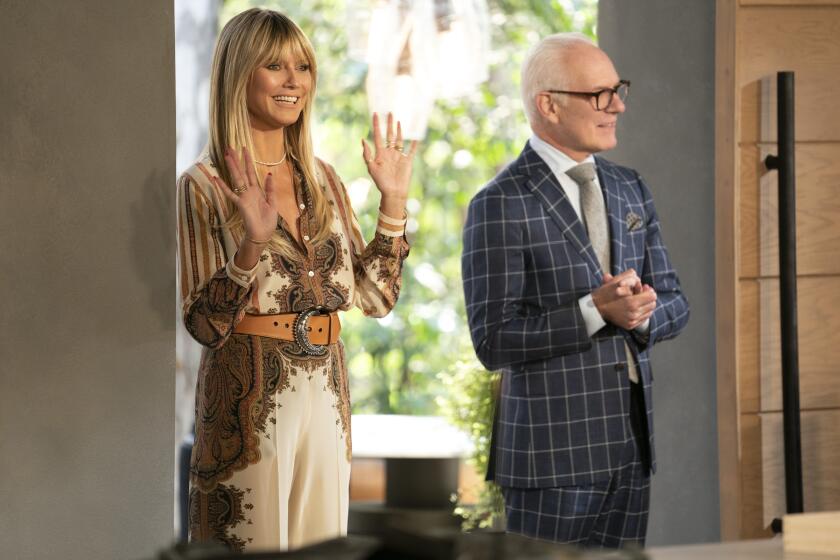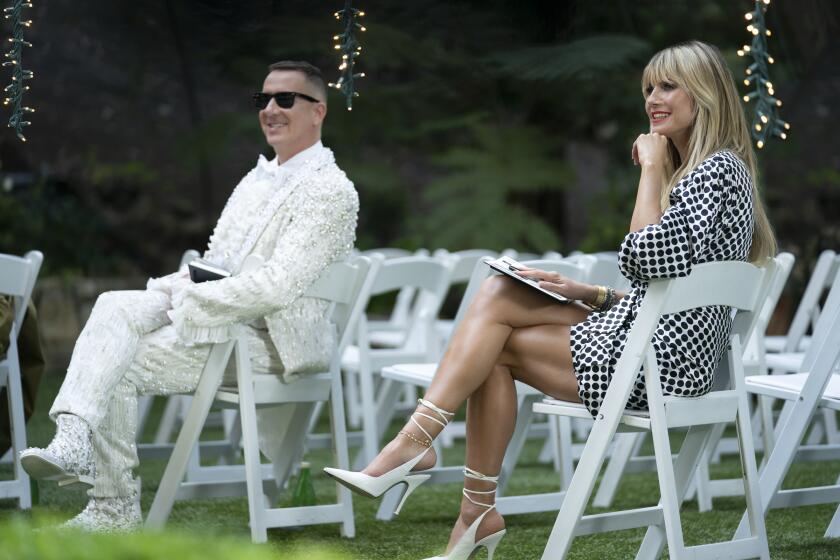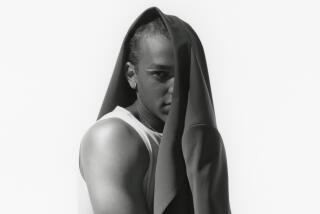Our fashion critic reviews ‘Making the Cut’s’ winning looks: ‘a little gimmicky’
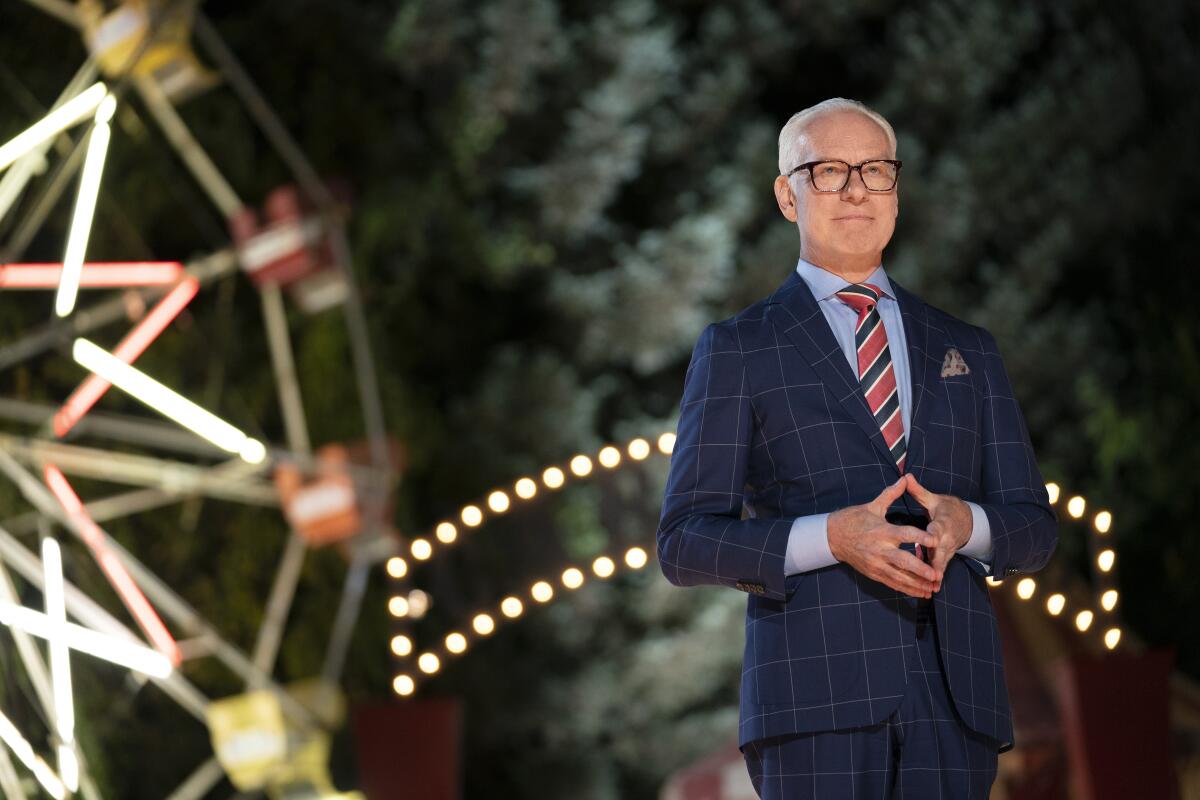
The following story contains spoilers from the fifth and sixth episodes of Amazon’s “Making the Cut” Season 2. Read our recap of last week’s episodes here.
Compared to last year’s inaugural season, the second installment of “Making the Cut” has been a low-energy, less exciting affair. This could have something to do with the smaller pool of contestants (10 instead of 12) or the fact that the designers competing for $1 million and an Amazon Fashion mentorship are cloistered in a Malibu fashion bubble instead of gallivanting the globe between challenges. Whatever the reason, that’s definitely not the case anymore: The sophomore season hits the back side of the eight-episode arc with some serious high-stakes shake-ups.
Episode 5: Welcome to the “Upside Downsable”
The Episode 5 challenge was to create two looks: a high-fashion, avant-garde runway look and an accessible version thereof , with denim at the heart of the collection. “We want you to go big — really big,” cohost and judge Heidi Klum told the remaining six competitors. The payoff would be big too, since the winning look would be co-branded with Levi Strauss & Co., which not only stocked the design studio with bolts of the workwear fabric and an assortment of sundries, trims and buttons but would also help determine the victor thanks to the input of Levi’s senior VP and chief product officer Karyn Hillman. The designers were given two days to create their two-look collections, which would be presented against a carnival-themed backdrop.
One of the most ambitious looks came from Raf Swiader, who took his inspiration directly from the big-top setting — specifically the metalwork infrastructure of the onsite Ferris wheel — resulting in a cage-sleeved top, bustier and full skirt ensemble that had definite Jean Paul Gaultier vibes. It might have put him in the running to win his first challenge but for a bustier that the judges felt sagged where it should have boosted.
Resident fashion expert Adam Tschorn offers his take on the winning items from the Season 2 premiere of Amazon’s reality series, now shoppable online.
Another of the episode’s standout looks came from the consistently strong Andrea Pitter, who used the bubble jackets of her childhood as the jumping-off point for a denim tube-top and dress combination that hugged the curves at the hips, created dramatic new ones on each arm thanks to double-bubble leg-of-mutton sleeves, ballooned at the floor, and featured a built-in bookbag/utility pocket between the shoulder blades. The judges were visibly — and audibly — impressed with it, as they were with her accessible look, a denim jumpsuit with an off-the-shoulder bodice, puffed sleeves and generously flared legs. In the end, though, the hobbling effect of the runway look’s constricting skirt scuttled her shot at a challenge win.
Like Pitter, Gary Graham took the “go big” advice from Klum to heart for his avant-garde runway look, a voluminous, double-breasted olive-drab and black colorblocked coat with geometric sheer mesh inserts that managed to riff on both the nostalgic quilting vibe of his brand DNA and the boldly patterned carnival set pieces at the same time. His accessible look featured a high-waisted, not-quite-knee-length dress that took an even more direct inspiration from the props, thanks to a four-point starburst design plucked from a wooden panel — peeling paint and all — and photo-printed onto light-colored denim. But it was the piece worn over it all that took Graham’s look to the next level: a Levi’s denim trucker jacket deconstructed and turned into a roomy, two-pocket cocoon coat/wrap hybrid that, at the top of the runway, the model removed, turned upside down and shrugged back into.
“Come on! Cost-effective in a pandemic, I love it!” judge and fashion model Winnie Harlow said after the switch-up. “Give me two jackets in one — that’s what I need!”
“It’s not reversible, it’s ‘upside-downsable,’” added her fellow judge, Moschino’s Jeremy Scott. “It’s brilliant.”
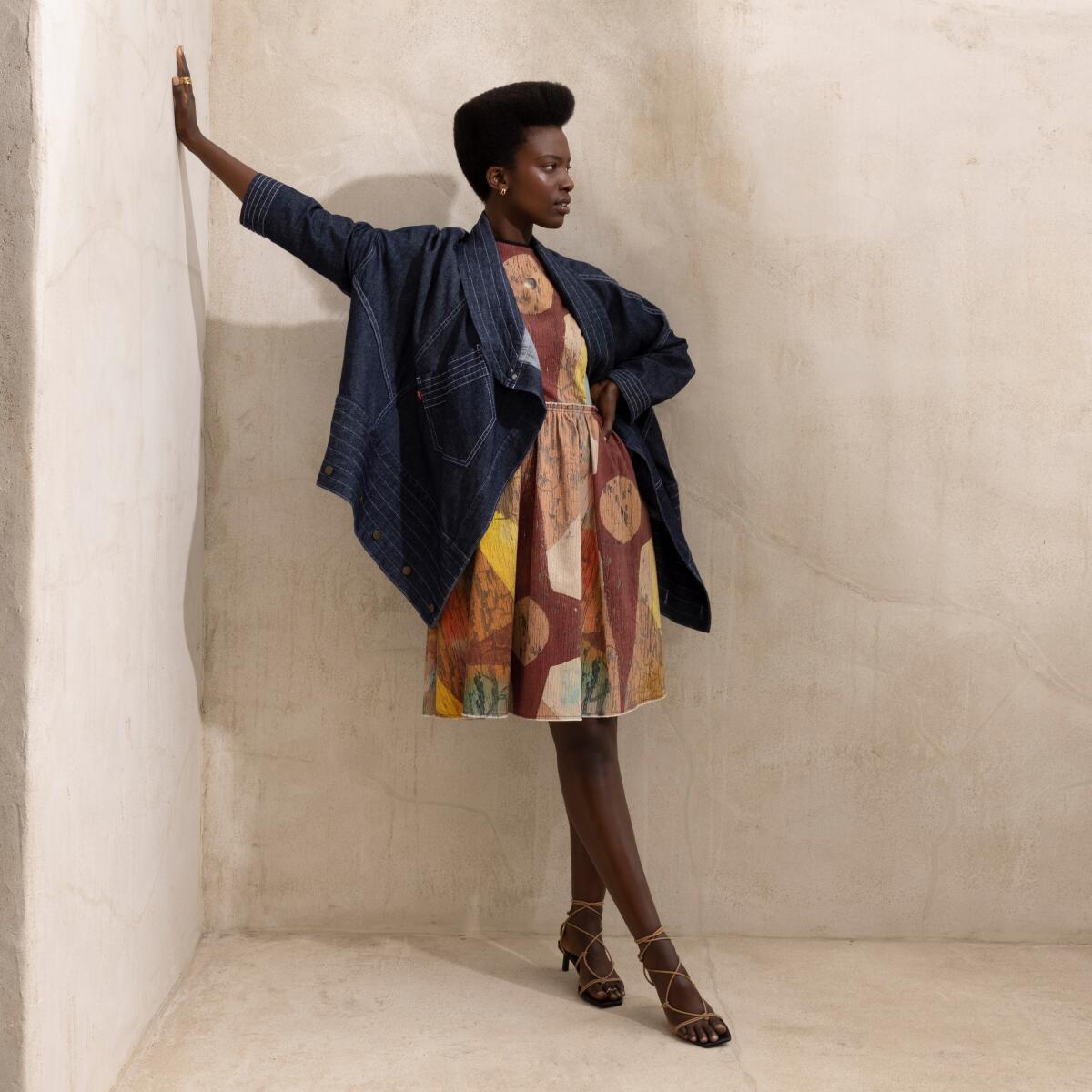
When asked by the judges to share his inspiration for the challenge, Graham’s explanation was as over-the-top as the clothes. “By the prick [sic] of my thumbs, something wicked this way comes,” he said while holding both arms out as if uttering an incantation. “Carnies, time travel and H.G. Wells — these are all themes that are part of this collection. Levi’s is the perfect time-traveling company: From the beginning of American history to the present to the future when we’re all gone, Levi’s will still be here.”
Graham’s runway sorcery earned him his second win (he notched his first in Episode 1) and put him head-to-head with the season’s only other two-challenge winner, Joshua Scacheri. That tension lasted all of a few minutes before things got even more “upside-downsable” and Scacheri was booted from the bubble for a Notting Hill Carnival meets London ’90s punk-inspired collection that the judges felt didn’t rise to the occasion.
The takeaway: While Graham’s deconstructed Levi’s trucker jacket ($200) is definitely a two-in-one “upside-downsable” bargain for the fashion-forward set, it also feels a little gimmicky. However, his carnival painting gathered-waist dress ($74.90) feels like it exists in the past, present and future all at once, making it the most affordable time-travel ticket around.
The second season of Amazon’s reality competition hits the halfway point with a modern wedding — followed by a fashion DNA test.
Episode 6: Not always a bridesmaid
“These days, as in-person fashion shows wane, video campaigns are even more critically important to promoting your brand and its messaging,” cohost Tim Gunn told the final five at the outset of Episode 6, setting the stage for a marketing-themed challenge that would have each contestant creating two looks and working with a videographer to create a video advertising campaign to promote their brand. Both the videos and the looks would be presented in a drive-in movie-themed runway show with guest judge Shiona Turini (a celebrity stylist, costume designer and brand consultant) joining Klum, Scott and Harlow.
As with the Episode 2 social media challenge, the winning strategy would involve grabbing attention, pulling focus and turning heads. But the judges also were looking for snippets of video that telegraphed and strengthened brand identity through visual cues. Failure to deliver on the first front proved fatal for Raf Swiader’s chances and failure on the second did in Lucie Brochard. Both were ultimately sent packing, making for the season’s second double elimination.
That wasn’t the episode’s only double-up, thanks to the judges’ decision to pick a pair of winners. One was Graham, who won his second straight — and third overall — challenge for a pair of looks featuring abstract hand-painted details on white fabric showcased in a video themed around a letter to one’s younger self (complete with a model doing a poetry voice-over). In yet another switch-up, the judges decided Graham’s runway look — a crisp, puff-sleeved, high-collared linen top and matching midi skirt — would be the one dropping in the MTC online store instead of the accessible look that paired a short-sleeve blouse with black pants sporting a white tuxedo side stripe.
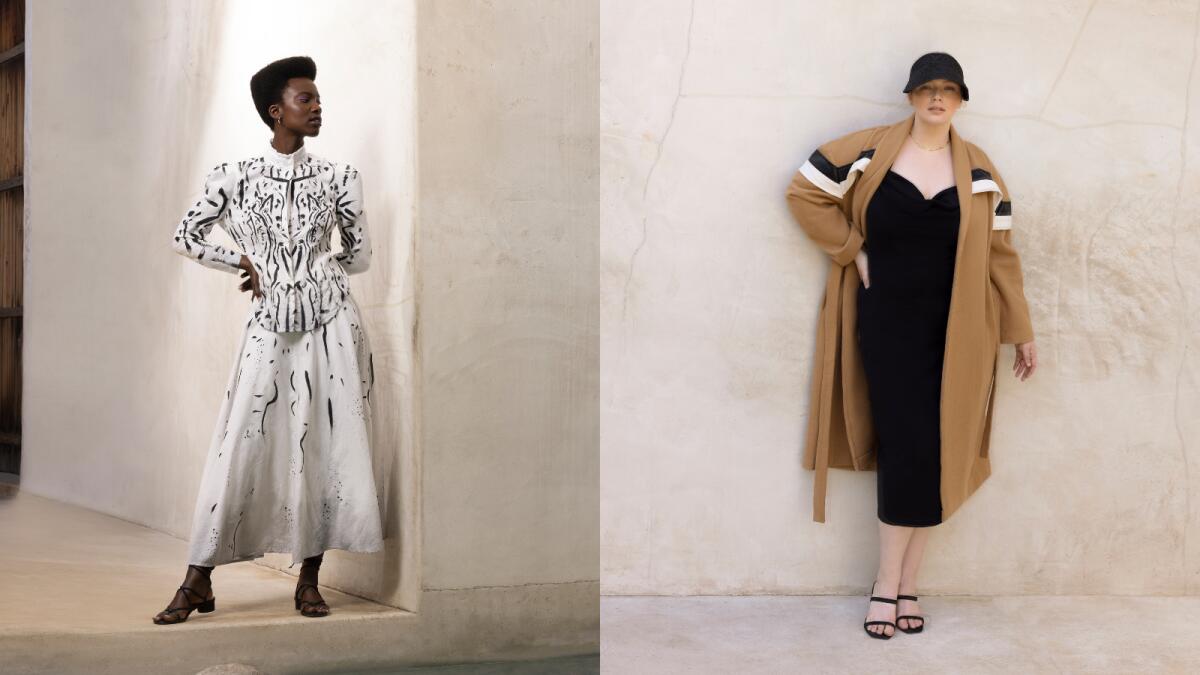
While Graham’s clothes, video and winning streak were all impressive, the episode’s more satisfying win went to season-long also-ran Pitter, who turned out two super-chic takes on the belted, camel-colored coat. The runway version sported a high, upturned collar accented with a sporty pair of stripes (one black and one white); it fell to mid-thigh with a pair of generous bow-like folds at each hip and was paired with a crisp, black beret and a pair of black lace trousers. The accessible version of the coat tweaked the details, dropping the length to mid-calf, adding a shawl collar and extending the stripes across the front shoulders and along the back yolk to give the comfy coat a bit of an athleisure vibe.
Pitter, mindful of how a failure to think visually cost her dearly in Episode 2, made up for it with a friendships-through-fashion-themed campaign video that connected with the judges instantly — and wordlessly. “I loved Andrea’s video,” guest judge Turini said to her fellow judges. “I thought it had such great energy [and] a sense of love and community that is important in setting yourself apart from other designers right now.”
“I am no longer a bridesmaid,” the Brooklyn-based bridalwear designer said with an enthusiastic laugh at the end of the episode. “This time I get to be the bride!”
The takeaway: While it’s hard not to love everything Gary Graham has sent down the runway — and into the MTC store — this season, including the paint-dabbed top ($59.90) and skirt ($84.90), Pitter’s comfy-meets-sporty camel-colored coat ($119.90) and fluid stretch jersey cowl-neck dress ($69.90) are this episode’s must-haves.
Bonus takeaway: Even though last week’s Episode 4 didn’t produce a winning contestant-designed look, it turns out that it did result in some wearable wisdom — a T-shirt ($21.99) and sweatshirt ($35.99) printed with a snippet of Scott’s episode-highlight “fashion is passion” speech. They can be found, along with other MTC-quip-emblazoned tees, totes and pillows, on the show’s merch page.
More to Read
The complete guide to home viewing
Get Screen Gab for everything about the TV shows and streaming movies everyone’s talking about.
You may occasionally receive promotional content from the Los Angeles Times.

